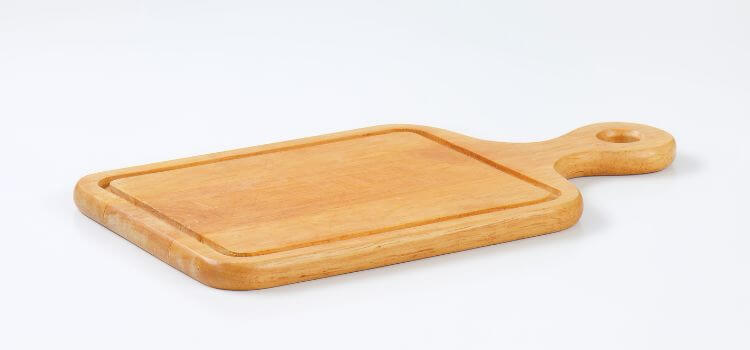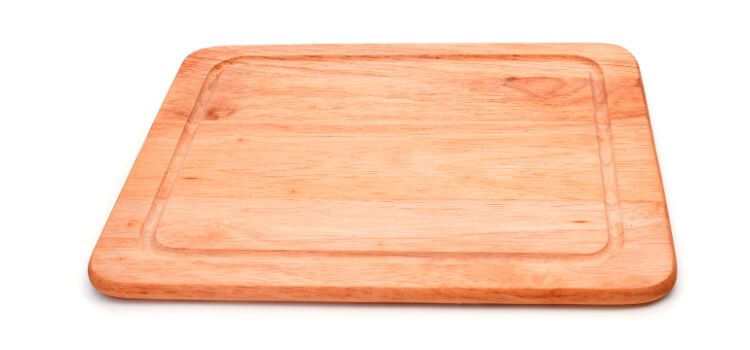As an Amazon Associate, I earn from qualifying purchases

In the heart of every kitchen lies a humble yet essential tool: the cutting board. It plays a crucial role in food preparation, serving as the foundation for chopping, slicing, and dicing. Selecting the right material for your cutting board can significantly impact its functionality, longevity, and the overall aesthetic of your kitchen. While options abound—from plastic to exotic hardwoods—white oak has emerged as a popular choice among culinary enthusiasts.
This article aims to explore the suitability of white oak for cutting boards by examining its properties, benefits, drawbacks, and comparisons with other wood types. By the end, you’ll have a comprehensive understanding to help guide your decision.
Properties of White Oak
White oak boasts a distinct appearance that makes it a standout choice for cutting boards. Its light, creamy color is often interspersed with well-defined grain patterns, offering a rustic yet elegant aesthetic that complements a wide range of kitchen styles. This visual appeal is not its only merit; white oak’s physical properties make it a robust contender in the world of cutting boards.
In terms of density and hardness, white oak ranks high, providing a durable surface that withstands the rigors of daily kitchen use. Its hardness is comparable to other popular hardwoods, ensuring that it resists scratches and dents while remaining gentle enough to minimize knife dulling.
One of the standout features of white oak is its natural resistance to moisture and decay. This is attributed to its closed grain structure, which makes it less prone to absorbing water. This property not only enhances its longevity but also makes it more hygienic, as it minimizes the potential for bacterial growth.
Benefits of White Oak for Cutting Boards
- Durability: White oak is highly durable due to its dense structure, allowing it to withstand constant use without significant wear and tear. With proper care, it provides a cutting surface that can last for years, making it a wise investment for both amateur cooks and professional chefs.
- Moisture Resistance: White oak naturally resists moisture, preventing warping or cracking that can affect other woods. This quality helps maintain its shape and integrity over time, making it ideal for busy kitchens where cutting boards are frequently washed.
- Aesthetic Versatility: The neutral tones and attractive grain patterns of white oak enhance its visual appeal, making it a perfect fit for any kitchen style, whether modern or traditional. Additionally, a white oak cutting board can serve as an elegant serving platter, elevating the presentation of your dishes.
Drawbacks of White Oak for Cutting Boards
- Maintenance: White oak requires regular oiling to maintain moisture resistance and prevent drying out, which can be seen as a drawback for those looking for low-maintenance kitchen solutions.
- Weight: Its density contributes to durability but also makes white oak heavier than other cutting board materials, which can be inconvenient for those who frequently move their boards or prefer lightweight options.
- Cost: While not the priciest hardwood, white oak is generally more expensive than softer woods due to its desirable properties and aesthetic appeal, prompting budget-conscious consumers to weigh its benefits against the cost.
Comparisons with Other Types of Wood

To better understand white oak’s place in the pantheon of cutting board materials, it’s helpful to compare it with other popular woods.
- Maple: Maple is often chosen for its hardness and affordability. It offers excellent durability and requires less maintenance than white oak, making it a practical choice for many kitchens. However, it lacks the same level of moisture resistance and aesthetic grain patterns found in white oak.
- Bamboo: Bamboo cutting boards are celebrated for their sustainability and eco-friendliness. They are harder than white oak, which can be tough on knives, and they tend to be more affordable. However, bamboo lacks the unique aesthetic and moisture resistance of white oak, potentially reducing its appeal for some users.
- Walnut: Walnut is known for its rich color and moderate hardness, which is gentle on knives. It requires similar maintenance to white oak but is less dense, making it lighter and easier to handle. While walnut offers a luxurious look, it doesn’t provide the same level of moisture resistance as white oak.
Care and Maintenance Tips
To maximize the lifespan and performance of your white oak cutting board, proper care and maintenance are essential. Here are some tips:
- Cleaning: After each use, wash the board with mild soap and warm water. Avoid soaking the board or putting it in the dishwasher, as this can damage the wood. Thoroughly dry the board with a towel to prevent moisture absorption.
- Oiling: Regular oiling is crucial to maintain the board’s moisture resistance and prevent cracking. Use a food-grade mineral oil, applying it generously across the board’s surface. Allow the oil to absorb overnight, then wipe off any excess with a clean cloth. Aim to oil your board every few weeks or when it appears dry.
- Storage: Store your cutting board in a dry, well-ventilated area away from direct sunlight and heat sources. If possible, store it upright to ensure even air circulation, which helps prevent warping.
Conclusion
White oak cutting boards offer a compelling combination of durability, aesthetic appeal, and moisture resistance, making them a valuable addition to any kitchen. While they do require regular maintenance and may come at a higher cost than other options, their longevity and functionality can justify these considerations for those who appreciate quality craftsmanship.
Ultimately, the decision to choose a white oak cutting board should be based on personal preferences, kitchen needs, and a willingness to invest in the care required to keep the board in pristine condition. Whether for everyday use or special occasions, a white oak cutting board can enhance both the functionality and style of your culinary space.
FAQ
Can white oak be used for cutting boards?
Yes, white oak is suitable for cutting boards due to its durability, resistance to moisture, and appealing grain patterns. Its hardness makes it a durable choice, though it requires regular maintenance like oiling to prevent drying. It’s a popular choice for both functionality and aesthetics.
Why not use oak for cutting boards?
While oak is durable, it can be heavy and may require more maintenance than other woods. Its porous nature in some varieties might lead to moisture retention if not properly cared for. Regular oiling and careful cleaning are essential to maintain its integrity and prevent bacteria buildup.
What wood should not be used for cutting boards?
Softwoods like pine or cedar should be avoided for cutting boards as they are prone to scratches, dents, and harboring bacteria due to their porous nature. These woods can also absorb odors and flavors, affecting the taste of food prepared on them.
Is white oak a good wood?
Yes, white oak is considered a good wood for its strength, durability, and moisture resistance. Its attractive grain patterns add aesthetic value, and it performs well under regular kitchen use. However, it requires maintenance to preserve these qualities, making it a worthwhile investment for quality seekers.
As an Amazon Associate, I earn from qualifying purchases